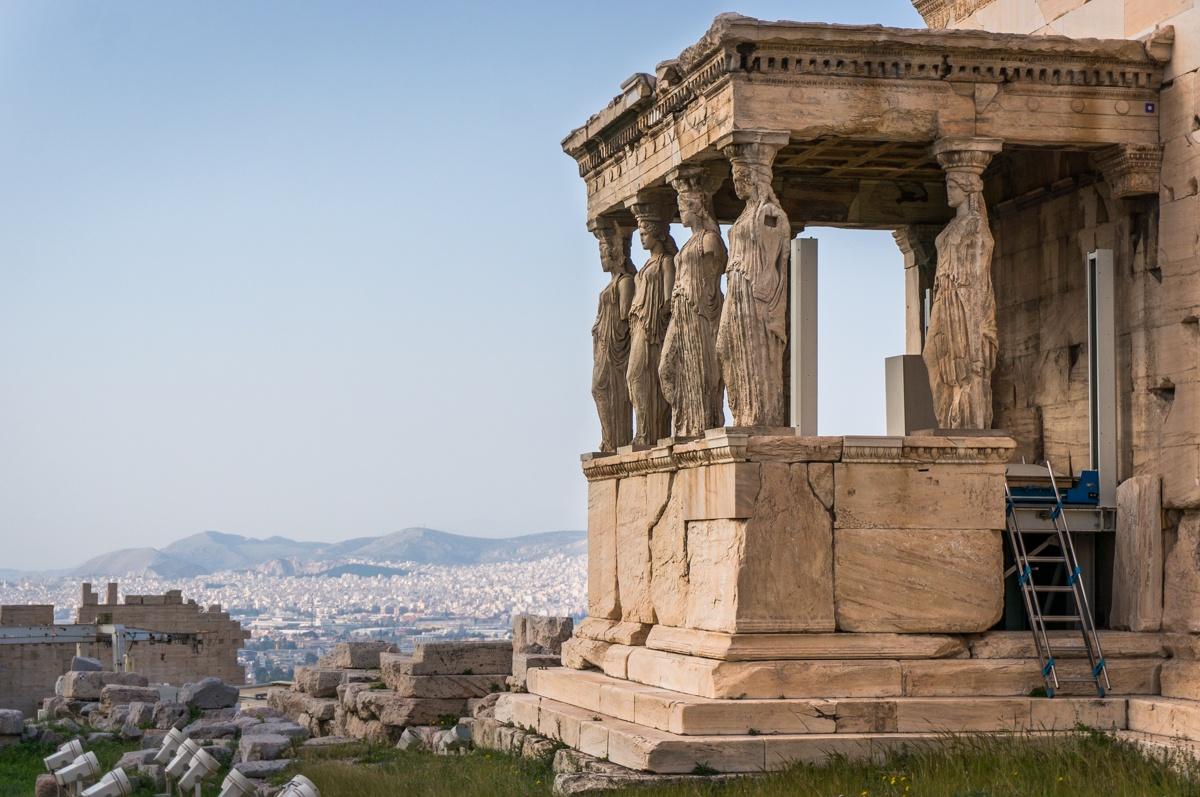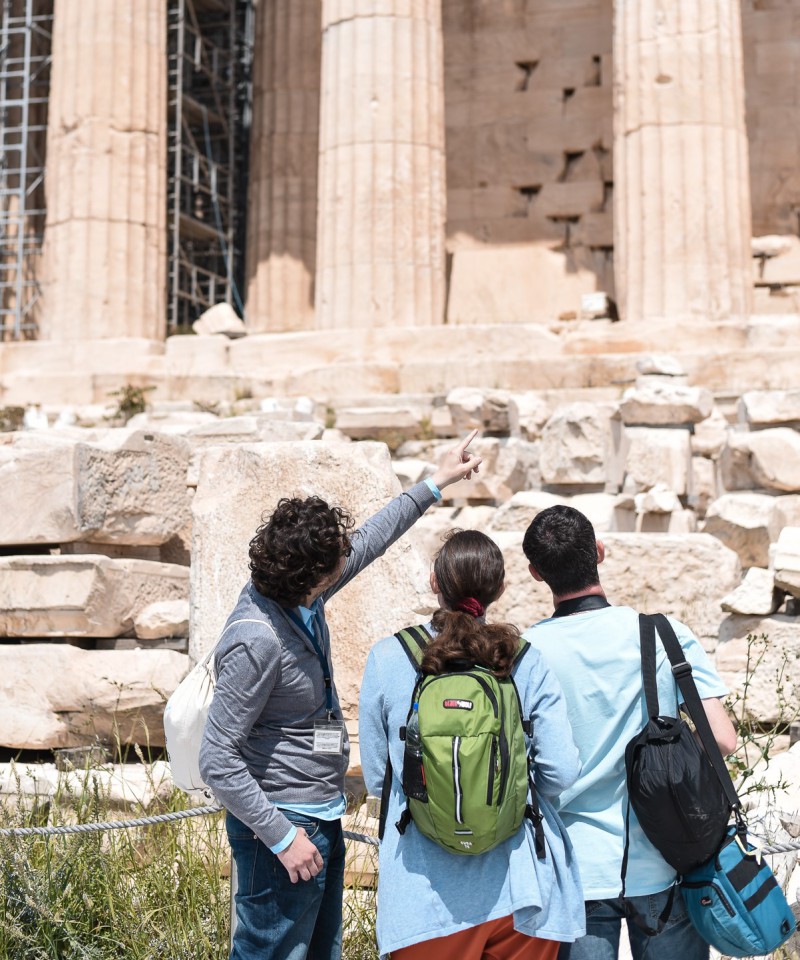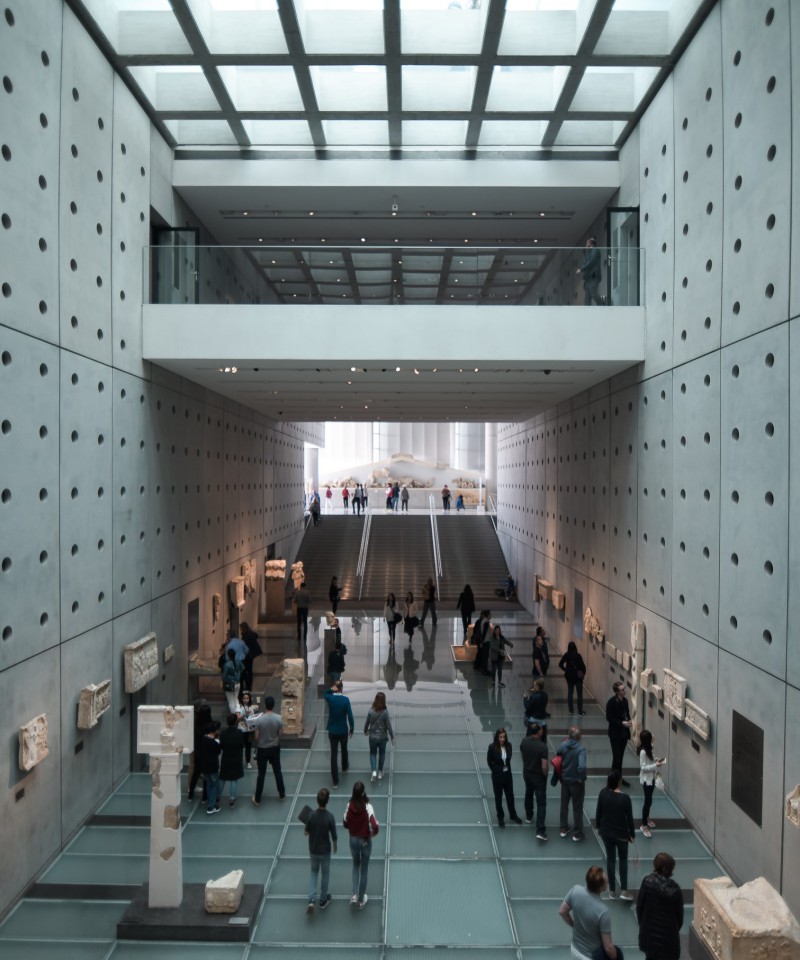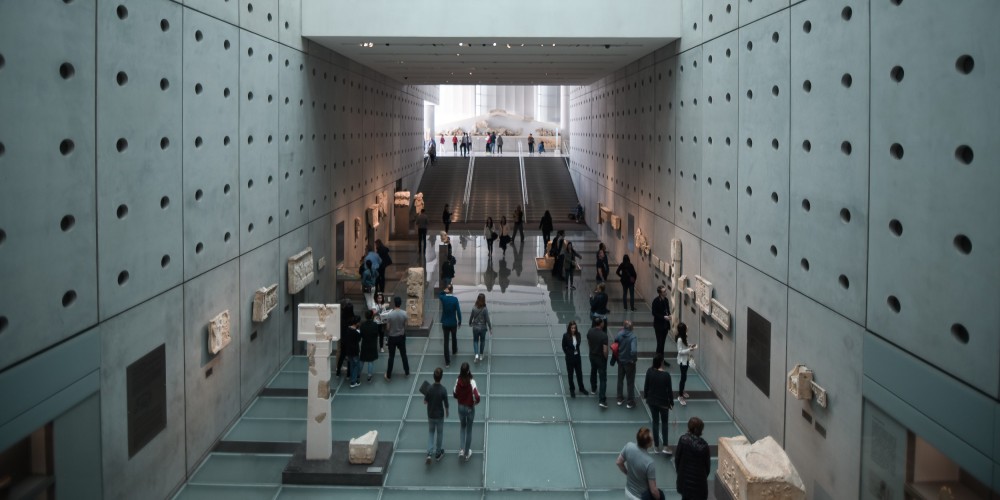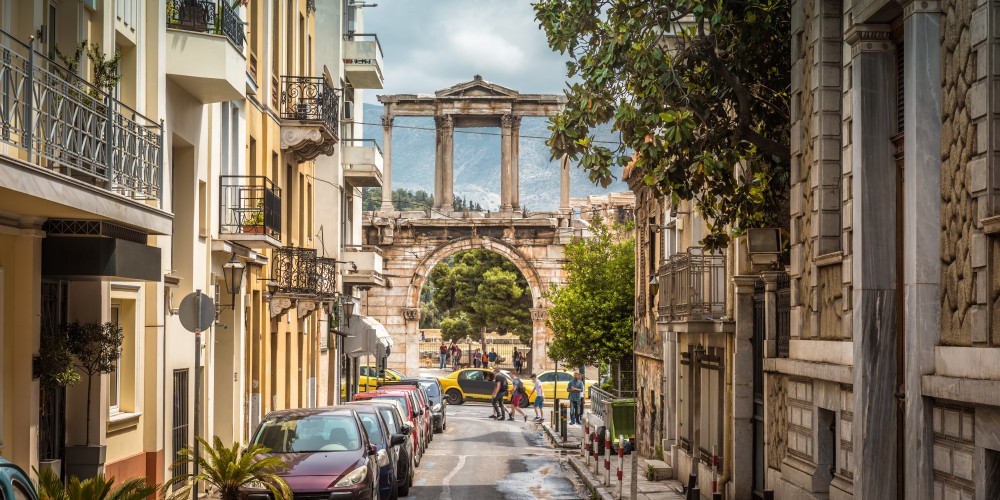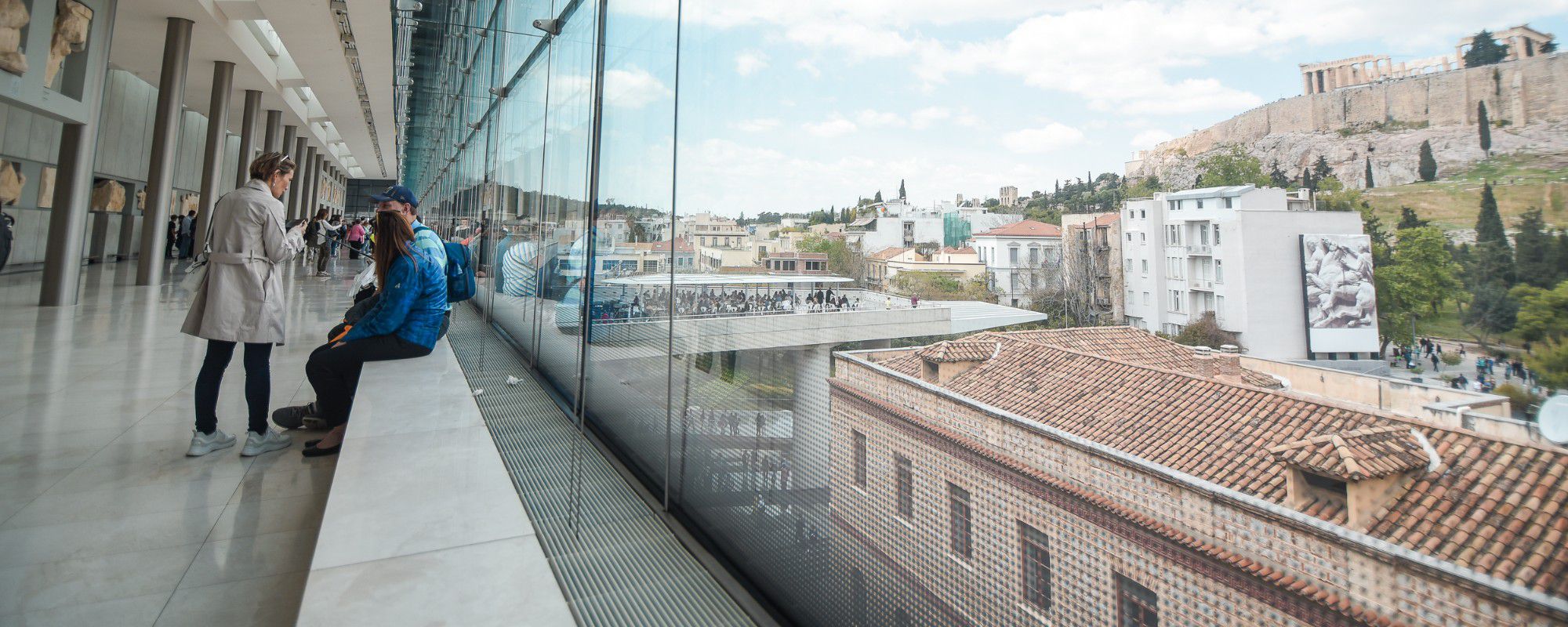
A Guide to the Acropolis Museum
Key Takeaways
- The new Acropolis Museum exhibition spaces with an area of 14,000 sq.m, hosting 4,000 exhibits found on the rock of the Acropolis
- The museum is served by the 'Acropolis' station on line 2 of the Athens Metro.
- It ranked 11th in TripAdvisor’s 25 best museums in the world.
- The general entrance admission costs 15€.
Situated just 280 meters away from the ancient temple of Parthenon, the new Acropolis Museum is a must-see attraction for anyone that steps foot in Athens and wants to immerse themselves into the rich culture of the ancient city.
Making its grand opening to the public on the 20th of June 2009, visitors experienced for the first time 14,000 square meters of Acropolis History with almost 4,000 exhibits masterfully composing the permanent exhibition.
It's time for you to discover the world of the new Acropolis Museum. It is one of the most significant landmarks in Greece, which is located in the center of Athens and houses the findings of the archaeological excavation that took place on the Acropolis of Athens while being located on the archaeological site of Makrigianni, a remnant of the Roman and Early of Byzantine Athens next to the ancient Athenian neighbourhood.
The History of the New Acropolis Museum
The first museum of the Acropolis was founded southeast of the ancient temple of Parthenon on December 30, 1865, and completed in 1874. A few years later, excavations in 1885-1890 uncovered sculptures destroyed by the Persians during the Second Persian Invasion of Greece.
As a result, the small museum needed more space. That is why a smaller building was built in 1888, east of the existing building, in which the least important antiquities were placed.
During World War II, many of the exhibits were stored in the basements of the National Archaeological Museum and in the caves of the neighboring hills. They returned to the museum after the end of the war and were temporarily housed in 1946 and 1947.
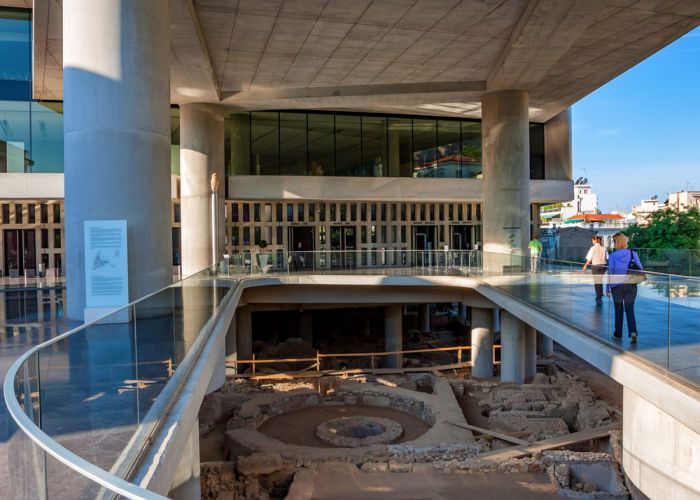
In 1953, work began on the expansion of the museum to plans by architect Patroclus Karantinos. The smaller building was demolished, new halls were built, and the layout of the old ones was changed. The first rooms opened in 1956, and the re-exhibition was completed in 1964.
Despite successive expansions, the building could not report the findings that were gradually discovered on the rock, and so, as early as 1974, the issue of building a new building was raised.
The construction of a new Museum was deemed imperative, as Greece began to strongly promote the issue of the return of the Parthenon marbles from the British Museum.
For about 30 years, archaeologists, architects, and urban planners debated over whether the street of Makrygiannis in the ancient Athenian neighbourhood was the most suitable place for the construction of the museum. In the archaeological site, private houses and workshops from the Classical era to the Byzantine years were discovered.
After the completion of the archaeological excavation and the clarification of the stratigraphy, the points where the foundation of the building was allowed were selected. The findings of the excavation have been preserved and are visible from the transparent floor of the first level of the building.
In the summer of 2000, an international competition for the pre-selection of scholars was announced for the elaboration of the plans of the new museum, which would house the masterpieces of the Acropolis. The proposal of the French-Swiss architect Bernard Tschumi and the Greek architectural office of M.Fotiadi prevailed.
Bernard Tschumi's design involves three conceptions: light, motion, and architectural planning.
The light: The new museum relies heavily on natural light, as it displays mainly sculptures, which require different lighting conditions from other types of museums.
The movement: The visitor's route forms a three-dimensional loop, offering an architectural and spatial experience starting from the archaeological excavation to the Parthenon hall and back.
The architecture: The museum is built around a concrete core with the exact dimensions of the Parthenon frieze. Inside the core are placed the support spaces, while around it and in the atrium that is created, the exhibition spaces of the museum are developed.
The Building
The building is based on raised pillars placed between the antiquities for the best protection of the archaeological site.
The design of the building creates the impression of a transparent space, without walls, with unobstructed views, where the archaeological site penetrates into the building.
In several places, inside and outside the building, the floors are transparent, allowing a view of the underlying antiquities.
The Museum building is located on the southern slope of the Acropolis, in the ancient Athenian neighbourhood of the former Makrigiannis ancient site, at a direct distance of 280 m. from the Parthenon.
The main entrance of the building is located on Dionysiou Areopagitou Street, while it is enclosed by Makrigianni, Chatzichristou, and Mitsaion streets.
The new Acropolis Museum is served by the 'Acropolis' station of line 2 of the Attica Metro, on the eastern edge of the Museum. There are secondary entrances from Makrigianni and Chatzichristou streets.
With a total area of 25,000 sq.m., the museum has exhibition spaces with an area of 14,000 sq.m. -ten times larger than in the old museum.
It is made of steel, glass, and cement and makes excellent use of natural light to highlight the approximately 4,000 exhibits found on the rock of the Acropolis and at the foot, covering a wide period of time from the Mycenaean era to the Roman and Early Christian Athens.
The top floor –also known as the Parthenon hall or the Parthenon Gallery- has in its exhibition space the dimensions and address of the ancient temple of Parthenon and is rotated 23 degrees in relation to the rest of the building so that the visitor has direct visual contact with the monument.
The museum is dominated by the frieze of the Parthenon in the Parthenon Gallery, the Caryatids of the Erechtheion, and the famous sculptures of the archaic era and the golden age of Pericles.
Great importance is given to the service of the local and foreign visitors, with the configuration of special reception areas, such as a foyer, shops, a restaurant, an amphitheater, and a periodical exhibition hall, but also the provision of information, so that the public is fully informed about what has to do with the Acropolis and its monuments.
The museum also has a 200-seat amphitheater, a virtual reality room, a formal space, and a periodical exhibition hall.
The surrounding area also functions as an open museum archaeological excavation site, which is visible from the glass floor of the ground floor. In the surrounding area is also the imposing Weiller building, built in 1834 by the German architect W. von Weiller, which combines Byzantine stonework with neoclassical decorative motifs.
Initially, it was used as a military hospital and later as the headquarters of police units, while since 1987, it has housed the 'Acropolis Studies Center.'
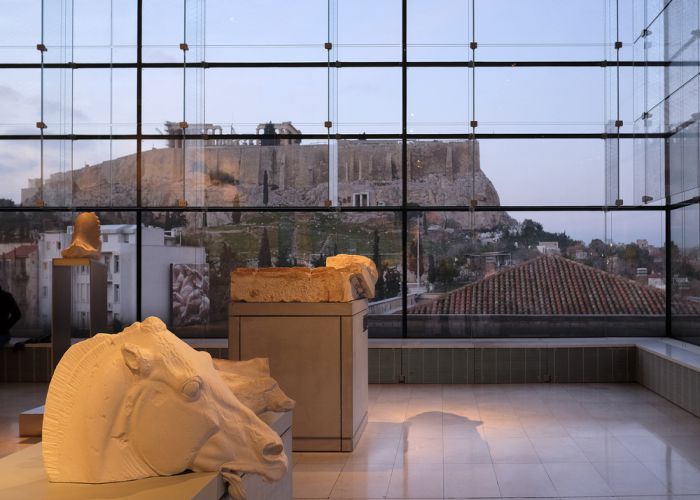
The Acropolis Museum Exhibits & Floor Plan
Ranked 11th in TripAdvisor’s 25 best museums in the world, competing with the British Museum, and awarded many times for its architecture and interior natural lighting, Acropolis museum was designed by Bernard Tschumi and Michael Photiadis.
Built with simple lines in a non-classical architectural manner, the museum portrays the architectural and mathematical concepts of the classical era in ancient Athens and the particular ancient Athenian neighbourhood, hugging all its artifacts and exhibits without stealing the light from their magnificence.
The new museum consists of four levels: the ground, first, and the third floor accommodates the permanent and temporary exhibitions, while the second floor is equipped with a restaurant, shop, multimedia center, and open spaces where you can relax and enjoy the view of the sacred rock.
The visitors follow a circular track during their tour of the museum, entering a historical journey of the Acropolis from the first dwelling of the sacred hill to the 5th century AD.
Findings from the slopes of the Acropolis hill, the Parthenon, the Election, and the Temple of Athena Nike, along with votive offerings to Gods, worship objects, and everyday art, all passing through your eyes, bringing ancient Athens to life.
The ground floor
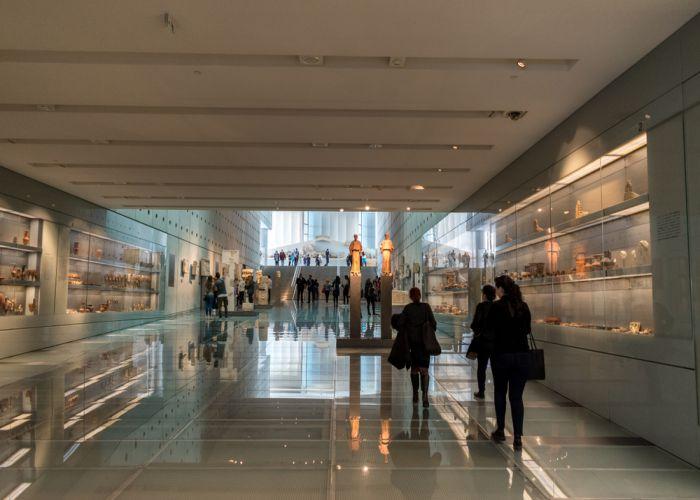
Visitors at the ground floor of the Acropolis Museum in Athens-credits: Paopano/Shutterstock.com
The museum is built artfully upon the archaeological excavation that lies beneath that brought to light an ancient Athenian settlement. The visitors have the chance to take a glimpse of those remnants through the glass floor before their entrance to the main museum exhibition and during their tour.
On the ground floor, you come across the first exhibition space of the Acropolis Museum that includes artifacts from the slopes of the Acropolis; from everyday objects like cookery pots and symposium vessels to votive offerings used to worship gods, the exhibition provides quite an insight into the ancient Athenian way of life.
The second floor
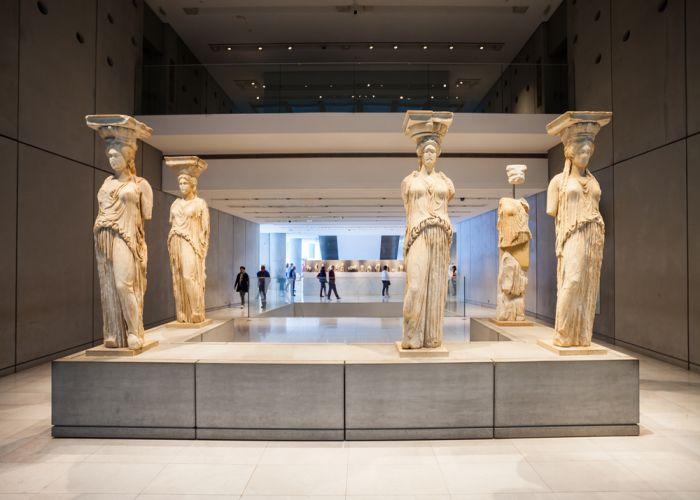
The sculptures of Karyatides, taken from the Erechtheion temple - credits: saiko3p/Shutterstock.com
The first floor's eastern and southern sections house the Archaic Acropolis Gallery. There, you break the time limits and travel back to the Archaic period; this is the time when city-states were formed, and the early roots of democracy were put down.
The naturally-lighted Archaic Acropolis Gallery presents a wide range of statues and other exhibits found in the Acropolis from the 7th century BC up to the Persian wars (480/79 BC). During your visit to the Acropolis Museum, make sure to give the Archaic Acropolis Gallery the attention it deserves!
The exhibition space of the Archaic period has its findings ordered and demonstrated in such a way that the visitor can get a three-dimensional view of them and observe every subtle line that shapes each one of them.
The third floor
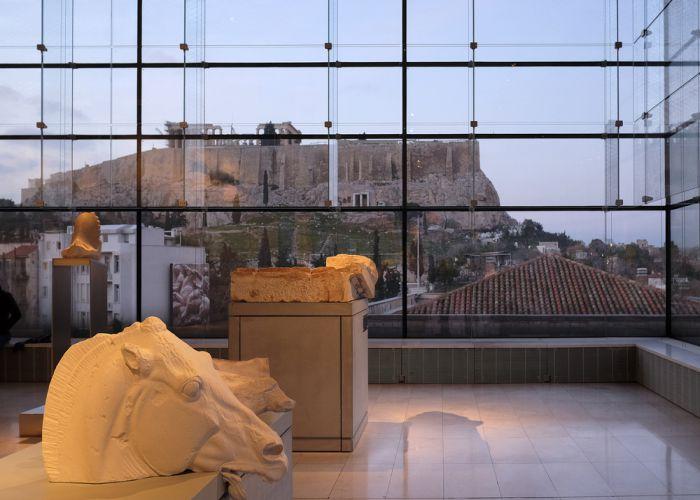
Exhibits on the Parthenon Gallery of the Acropolis Museum - credits: serkan senturk/Shutterstock.com
Continue your tour and escalate up to the third floor, where the Acropolis Museum hits its peak with the Parthenon Gallery.
Built between 448 and 438 BC, Parthenon is the emblematic symbol of the ancient Greek spirit reflecting the concepts of mathematics, architecture, beauty, and harmony on its very columns.
The Parthenon Gallery demonstrates the artifacts found inside the shrine, the metopes, and the pediment of the sanctuary within an evocative and naturally lighted environment that aims to give the visitors the feeling of walking inside the Temple of Athena Nike.
Among the artifacts, the 160-meter decorated frieze with depictions of Panathinaea – the great festival that honored goddess Athena – awaits for the original 80-meter frieze piece demonstrated in the British Museum, known to the public as the Parthenon marbles, to return to its rightful place.
Making your way back to the first floor, you can watch exhibits from other Acropolis buildings and the ancient neighbourhood. Walk by the unique-designed coffered ceiling of the Propylaea and admire sculptures from Athena Nike Temple. Meet the popular Caryatids, the elegantly draped clothing maidens that support the south porch of Erechtheion.
Finishing your Acropolis Museum rumbling, end up at the north side of the first floor; here, you have the chance to watch exhibits found on the Acropolis Hill from the 5th century BC to the 5th century AD.
Statues, decrees of the Public Assembly of the ancient neighbourhood of Athens, remnants from the sanctuary of Artemis Brauronia, votive objects dating back to the Classical, Hellenistic, and Roman times, and many more artifacts are demonstrated in the last Gallery of the museum, closing your Acropolis Museum journey with nothing but awe.
Acropolis Museum Facilities & Architecture
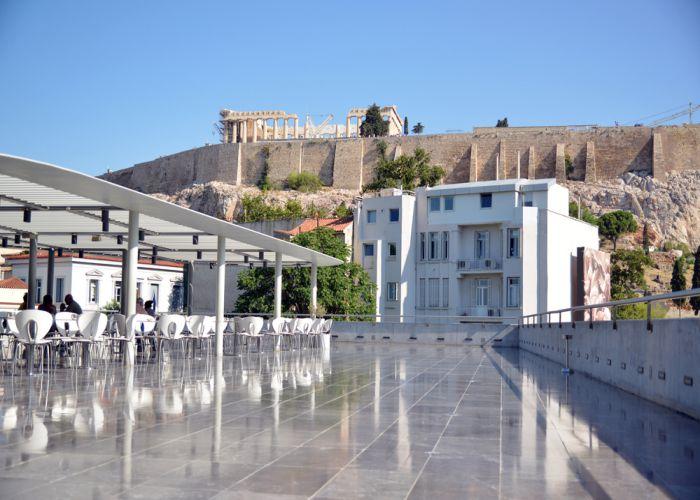
Acropolis museum New modern building cafe - credits: Maria Chavdarova Mavrona/Shutterstock.com
Acropolis Museum complies with the prescriptions of a 21st-century international museum and provides visitors with a range of facilities where they can relax, have a nice bite to eat, and take a dip in the mysteries of the Acropolis.
The museum offers audio-visual stimuli all the way through the exhibitions and accommodates a reading lounge and a lab where you can deepen your knowledge of the Acropolis.
On the ground and second floor, you can find a café and a restaurant where among other things, you can enjoy jazz sounds after dinner every Friday with an astonishing night view of the Acropolis.
How Much do Acropolis Museum Tickets Cost in 2021?
You can book your ticket for the Acropolis Museum either at the Museum’s Ticket Desk or through its e-ticketing service.
The ticket normally costs 15€ (summer season), but you can check if you are eligible for reduced admission on the Acropolis Museum's official website.
Acropolis Museum Opening Hours
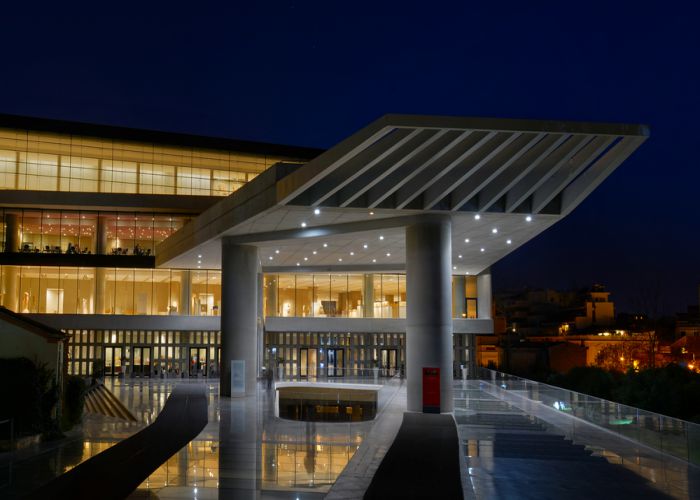
During the summer season, the museum is open from 8.00 am until 8.00 pm, apart from Monday, which operates from 8.00 am to 4.00 pm, and Friday, from 8.00 am to 10.00 pm.
During the winter season, the opening hours are a bit different; the museum opens at 9.00 am every day and closes at 5.00 pm, except for Friday, which closes at 10.00 pm, and the weekend at 8.00 pm. The last admission to the museum is half an hour before it closes.
Make sure that you visit the official site of the Acropolis Museum to follow any updates on opening times and admission fees.
Keep in mind that you can access the shops, restaurant, and café in the museum for free.
Remember that there is a baggage control system that you are required to go through before you enter the main area of the museum and a cloakroom where you must deposit any backpacks and packages you carry. So it would be best practice to pack lightly when you visit the museum.
You should also know that pets are not permitted in the museum (apart from guide and assistance dogs), and mobile phones are only to be used in the lobby, café, and restaurant of the museum.
When it comes to photos, you are free to take pictures of all the exhibitions in the museum, apart from the Gallery of the Slopes of the Acropolis and the Archaic Gallery. Also, bear in mind that flash and portable photography equipment is not allowed.
Acropolis Museum Restaurant and Cafe
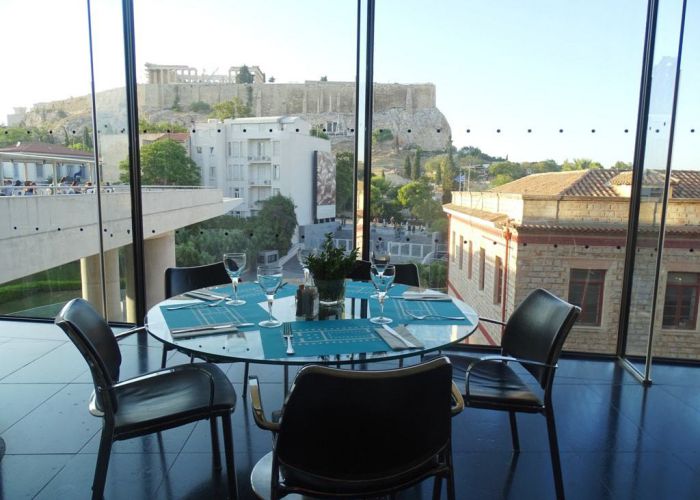
In true Greek spirit, the Acropolis Museum, along with its historical and cultural offerings, provides its visitors with a unique culinary experience in its restaurant and cafe.
The Acropolis Museum Restaurant and Cafe is located on the second floor with a balcony of 700 sq.m. and panoramic views of the Acropolis and the other historic hills of the ancient neighborhood of Athens. There, you will find a variety of hot dishes based on traditional recipes that are renewed seasonally.
From the daily menu, our top recommendations include the fresh shrimp from the region of Alexandroupoli with ouzo, cherry tomatoes, barley, and Kozani saffron, the beef scallops with fresh oregano, lime, and lightly sauteed seasonal vegetables, and the homemade Bolognese pasta served with cheese from Amfilochia.
The menu also incorporates a selected dish of the day inspired by local recipes that cover all geographical parts of the country.
What's more, the Acropolis Museum Restaurant and Cafe takes into consideration its little visitors, offering special kids menus at affordable prices, such as sandwiches with Greek prosciutto, cream cheese, basil, and rocket or traditional Thessaloniki bagel stuffed with Cretan gruyere cheese.
The Acropolis Museum Restaurant and Cafe is minimal and modern, with excellent views of the Parthenon, from the awesome terrace. Its Greek cuisine, which focuses on Designation of Origin Products, attracts both a local and a foreign audience who makes a stop here after touring the Museum's top exhibits.
What's the best way to see Acropolis Museum?
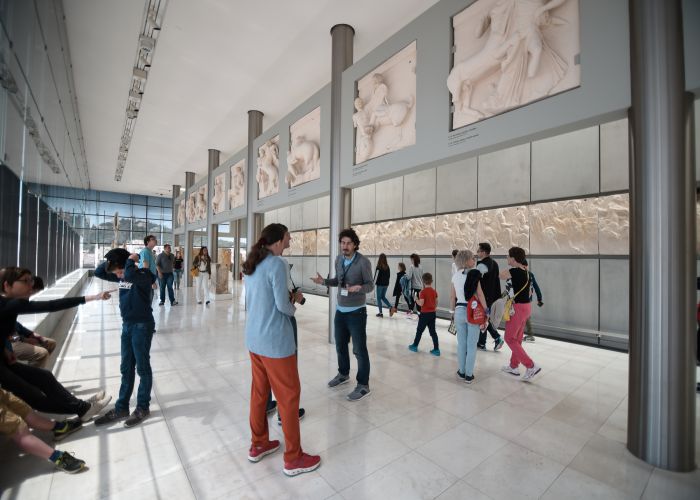
Unless you’ve studied archaeology, visiting the museum alone or without efficient historical knowledge will not offer you the opportunity to take advantage of this remarkable sight to the fullest.
In our opinion, the best way to visit the Acropolis Museum and see all of its exhibits is through a guided tour. During a tour, a knowledgeable, licensed guide will introduce you to the mystical world of ancient Greece and share insight into its culture and daily lifestyle.
Both the Private Mythology Tour of Acropolis and Acropolis Museum or the Best of Athens in One Day: Acropolis & City Tour with Transfer are excellent choices if you're looking to experience the striking excellence of the Acropolis and the Acropolis Museum in all of their glory.
When visiting Athens, guided tours are an absolute must in order to save time and wander through the city like a local, efficiently, easily, and comfortably!
Final Thoughts
No visit to Athens will be complete without a stroll through the stunning halls of the modern Acropolis Museum. Now you have all the information you need to transform this experience into one of the highlights of your life, whether you book one of our Greece vacation packages or travel to Greece independently.
Frequently Asked Questions
What can I see at the Acropolis Museum?
Are the original sculptures from the Acropolis displayed at the museum?
How many floors does the Acropolis Museum have?
Are there any special exhibitions at the Acropolis Museum?
Can I take photographs in the Acropolis Museum?






